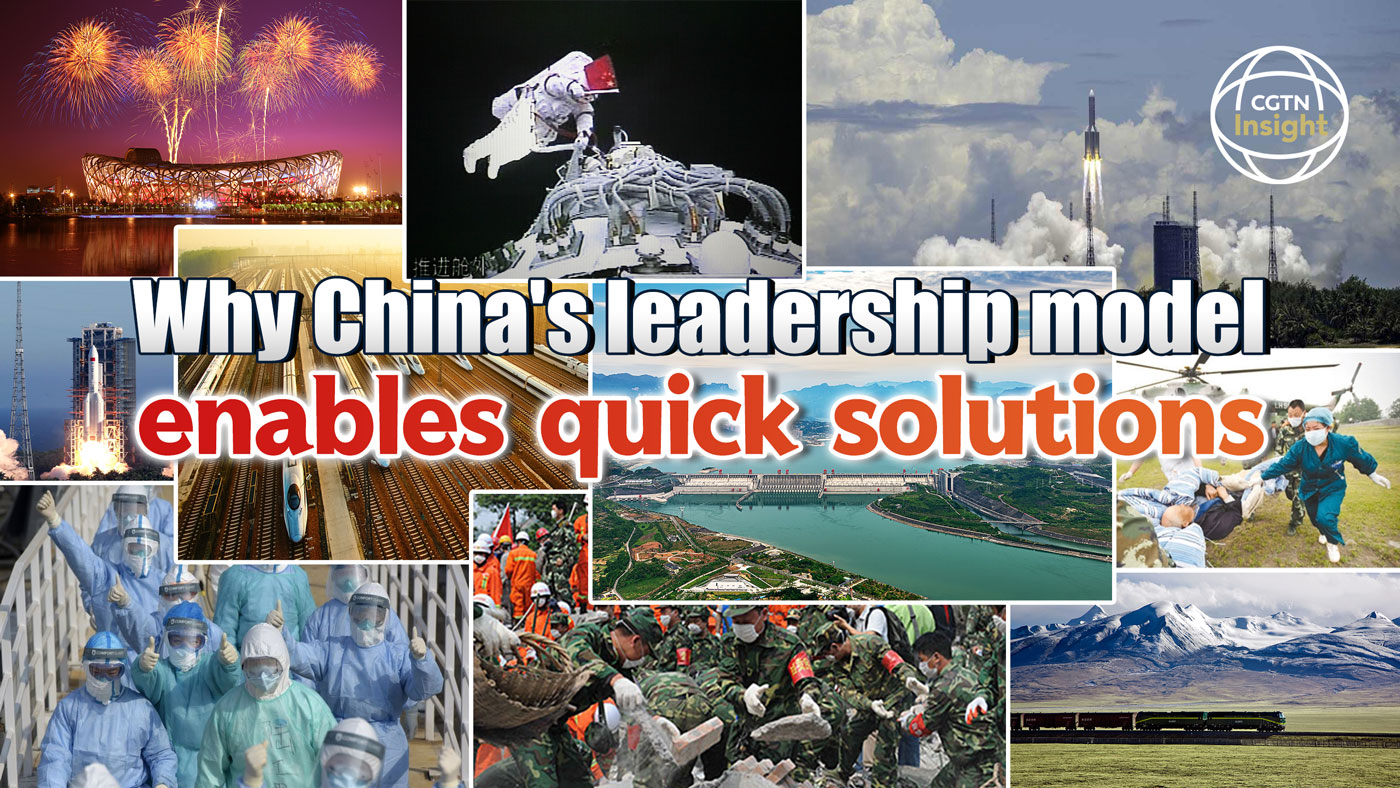
Editor's note: "Roots of China's Growth" is a 10-episode series marking the centenary of the founding of the Communist Party of China (CPC), which has presided over the country's meteoric rise as a global power. The series focuses on 10 fundamental elements of the strategy that has led to China's transformation from an impoverished nation over the past 100 years. The "leadership model" is the first in the series.
How fast can a government respond to an earthquake? The answer not only affects how many lives might be saved, but also speaks to a government's leadership.
China's answer to this question, even 13 years ago when the country's technological development was far from where it is today, amazed the world.
In 2008, a major earthquake jolted Wenchuan, a county of Sichuan Province in southwest China. Around 10 minutes after the disaster hit, China's military emergency response office issued a statement on the situation from Beijing, and the People's Liberation Army (PLA) initiated its emergency response plan.
By the 21st minute, the Chengdu Military Command dispatched four helicopters to survey the damage, with 6,100 officers and soldiers from the Chengdu Military Command stationed around the affected area and over 3,000 members of the Sichuan Armed Police Force also deployed to the frontlines.
In less than 10 hours, 20,000 PLA troops and armed police were already at disaster sites assisting with relief work. An additional 34,000 officers and soldiers were on their way to provide more support.
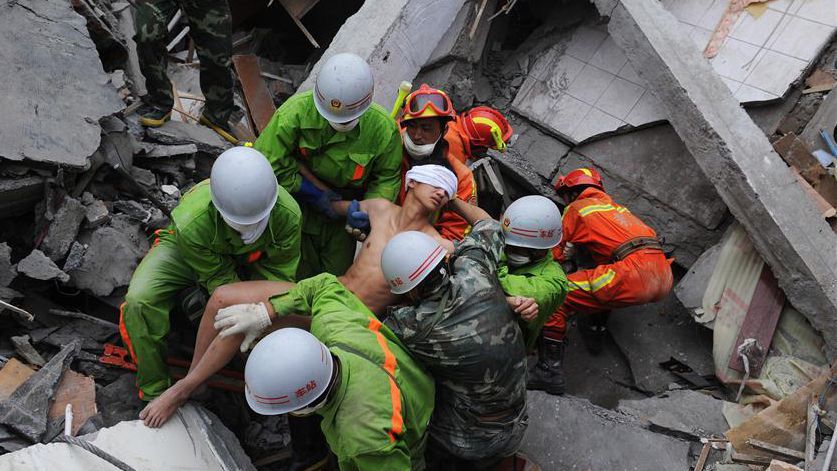
File photo taken on May 17, 2008 shows rescuers carrying Jiang Yuhang, who was trapped for about 123 hours in the rubble, at quake-hit Yingxiu Township of Wenchuan County, southwest China's Sichuan Province. /Xinhua
File photo taken on May 17, 2008 shows rescuers carrying Jiang Yuhang, who was trapped for about 123 hours in the rubble, at quake-hit Yingxiu Township of Wenchuan County, southwest China's Sichuan Province. /Xinhua
Intrinsic speed of state responsiveness
What accounts for such a speed? Despite the misunderstandings some Westerners harbor about China, the answer to this question is undeniable: the government's leadership is an absolute source of it.
From "Two Bombs, One Satellite" to the Chang'e lunar mission, from the south-to-north water diversion project to the Qinghai-Tibet railway, from the Beijing Olympics to the Shanghai World Expo, the CPC's resounding leadership has radiated across all social sectors.
But such leadership is by no means equivalent to what some portray as China's authoritarian rule. Having grown and developed in China, the CPC has leadership in its genes. This is expressed in the Party's capabilities in problem-solving, consensus building and social mobilization, as well as its great resilience amid uncertainties and challenges.
China is a populous, multi-ethnic country with vast territory, and drastic regional differences that make nationwide solidarity hard to achieve. The past two millennia witnessed the rise and fall of dynasties, secessionism and civil unrest with disruptive consequences.
Born in such a volatile historical environment, the CPC, through a century of exploration and experiment, has established a stable and strong political system that is full of life.
A unique governance philosophy
While managing a mega-society, the CPC draws on the wisdom of the Chinese civilization and has developed a unique leadership philosophy with Chinese characteristics.
The CPC's leadership is reflected in its consensus-building capability. After the outbreak of the COVID-19 pandemic, the CPC locked down the city of Wuhan to contain further spread of the virus.
In the beginning, this elicited confusion, questions and even panic from some groups in society. The CPC provided timely updates on the situation through the central government and helped people under lockdown address challenges regarding everyday life – through grassroots community actions mobilized by local governments. Such efforts effectively curbed the spread of the pandemic and fostered social stability.
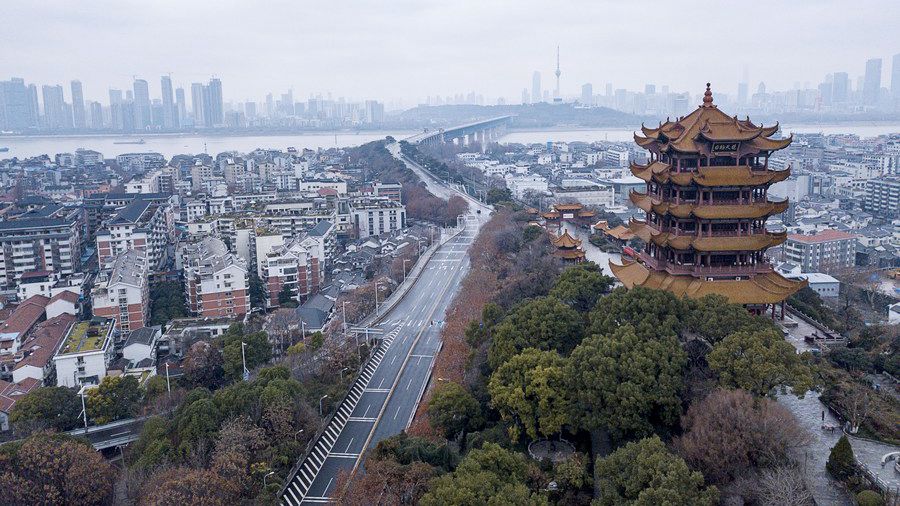
Aerial photo taken on January 26, 2020 shows the Yellow Crane Pavilion and the Yangtze River Bridge during a lockdown to contain the epidemic in Wuhan, central China's Hubei Province. /Xinhua
Aerial photo taken on January 26, 2020 shows the Yellow Crane Pavilion and the Yangtze River Bridge during a lockdown to contain the epidemic in Wuhan, central China's Hubei Province. /Xinhua
On the other hand, some countries were bogged down by deep social divisions, resulting from partisan conflicts. According to a Pew Center poll in 2020, more than three-quarters of respondents believed their countries were more split than before the pandemic.
The CPC's leadership is also demonstrated by the Party's social mobilization capability, which enables the government to pool all resources to complete key national undertakings.
In the early stages of the coronavirus outbreak, Wuhan was in dire need of pandemic relief supplies. The Central Committee swiftly put in place a supporting mechanism through which 19 provinces provided direct assistance to 16 cities and prefectures outside Wuhan in Hubei Province. More than 330 military and civilian medical teams comprised of more than 40,000 healthcare workers came to Wuhan's rescue and volunteered to work at the frontline.
"I have never seen, in my life, this kind of mobilization," said WHO Director-General Tedros Adhanom. "China's speed, China's scale and China's efficiency… is the advantage of China's system."
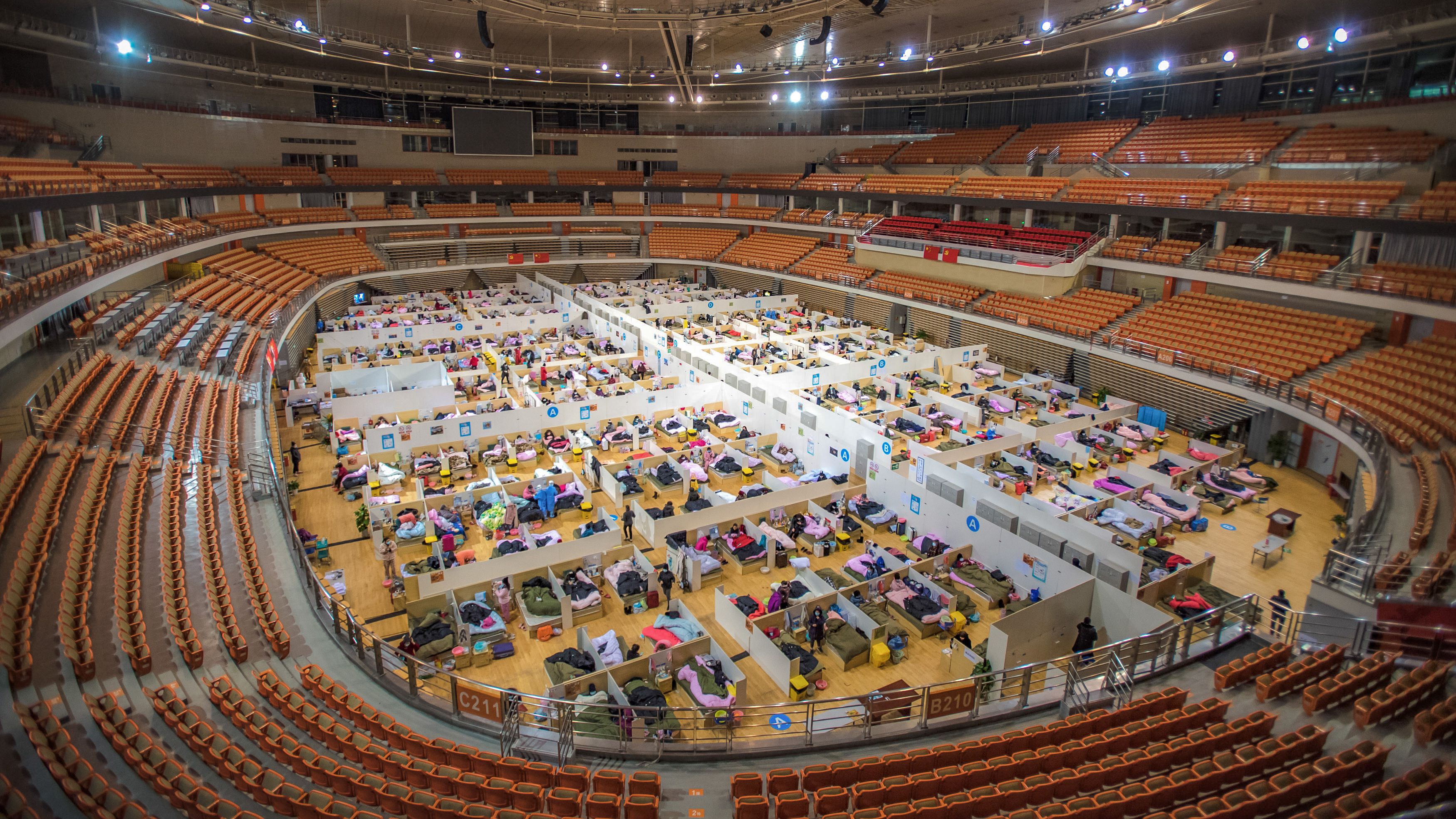
The interior view of the temporary hospital converted from Wuhan Sports Center in Wuhan. /Xinhua
The interior view of the temporary hospital converted from Wuhan Sports Center in Wuhan. /Xinhua
In some other countries, however, state governments are adopting different and sometimes contradictory COVID-19 policies, making a coordinated, efficient and mobilized COVID-19 response unlikely.
The CPC's leadership is also fully demonstrated by its resilience. The pandemic has been a test of national resilience. In stark contrast to the U.S. where partisan fights weaken countries from within, the CPC need not worry about power struggles and can therefore concentrate on economic recovery.
During the pandemic, the CPC not only worked on short-term economic stimulus, but also charted a strategic blueprint for socio-economic development over the next 15 years as an endeavor to turn crises into opportunities.
When comparing the performance of Chinese and American governments, some scholars have noted that China's political party system has been very stable. Under the leadership of the CPC, China's per annum GNP keeps growing, meeting the needs of the country's 1.4 billion people and promoting a robust economic rebound.
In the meantime, the U.S. still struggles to produce a long-term plan due to its partisan divisions. Whether or not the Biden administration will be voted out after its first term is uncertain.
Debunking the autocracy theory
For some Westerners, China's government has been a synonym for "autocracy," but data shows that its leadership is deeply rooted in the masses.
During the pandemic, many people around the world have been generally disappointed by political parties. A study by The World Values Survey found 75 percent of respondents from 55 countries have little or no confidence in their parties. Only respondents from China, Vietnam and Malaysia mostly answered "a great deal" or "quite a lot" in describing their confidence.
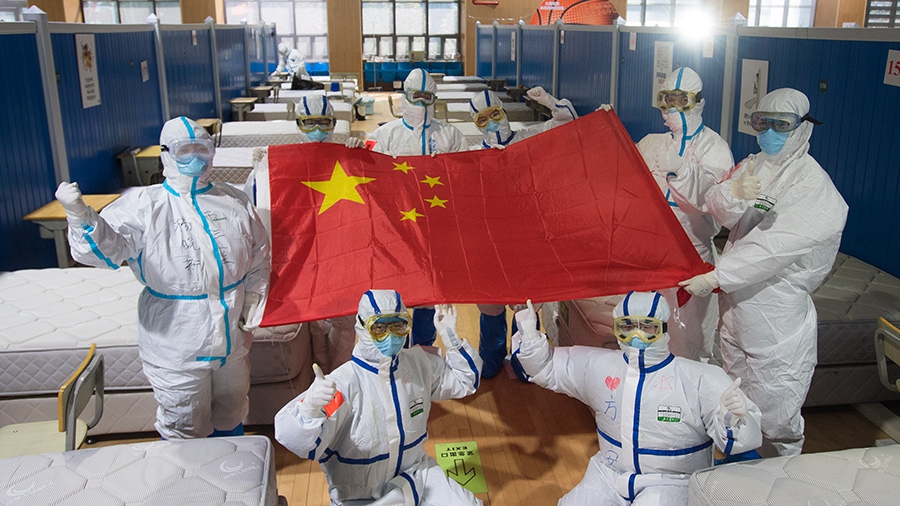
Medical workers pose for photos after seeing cured patients off at the Wuchang temporary hospital in Wuhan, central China's Hubei Province, March 10, 2020. /Xinhua
Medical workers pose for photos after seeing cured patients off at the Wuchang temporary hospital in Wuhan, central China's Hubei Province, March 10, 2020. /Xinhua
In China, public satisfaction with the Chinese government in 2016 was higher than at any time over the previous two decades, according to a report by the Harvard Ash Center for Democratic Governance and Innovation in 2020. The data shows a vast majority of Chinese people support the CPC.
Political parties are key instruments of state governance. Extraordinary leadership is a political party's most powerful asset in managing crises. How do we build responsible political parties? How should ruling elites play their respected roles? How do we handle the relationship between political parties and the people? These are common challenges facing political parties across the world.
Today's China, under the leadership of the CPC, is showing its advantages to the fullest as a socialist country with Chinese characteristics. And the CPC's leadership is the answer.
The author is Professor Zheng Huan of the Party Development Research Center at the Party School of the Central Committee of the CPC. You can contact him directly at zhenghuan@ccps.gov.cn. Please send any other contributions, including expressions of interest in sharing expertise with us, to opinions@cgtn.com.

